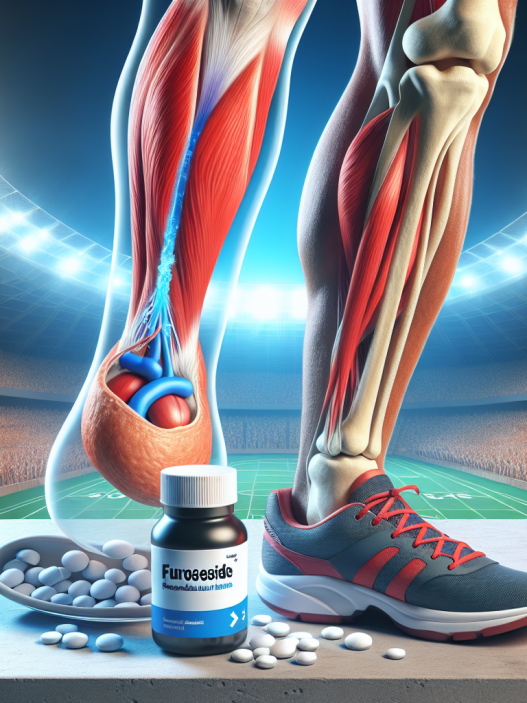-
Table of Contents
ECA: Enhancing Sports Performance Potential
Sports performance is a highly competitive field, with athletes constantly seeking ways to improve their performance and gain an edge over their opponents. While training, nutrition, and genetics play a significant role in an athlete’s performance, the use of performance-enhancing substances has also become prevalent in the sports world. One such substance that has gained popularity among athletes is ECA, a combination of ephedrine, caffeine, and aspirin. In this article, we will explore the effects of ECA on sports performance and its potential benefits for athletes.
The Science Behind ECA
ECA is a combination of three substances: ephedrine, caffeine, and aspirin. Ephedrine is a stimulant that acts on the central nervous system, increasing heart rate and blood pressure, and improving alertness and focus. Caffeine, a well-known stimulant found in coffee and energy drinks, also acts on the central nervous system, providing a boost of energy and improving mental alertness. Aspirin, a non-steroidal anti-inflammatory drug (NSAID), is commonly used to relieve pain and reduce inflammation.
When combined, these three substances work synergistically to enhance sports performance. Ephedrine and caffeine work together to increase energy levels, improve focus and alertness, and delay fatigue. Aspirin, on the other hand, helps reduce inflammation and pain, allowing athletes to push through intense training sessions and competitions without being hindered by pain or discomfort.
The Benefits of ECA for Sports Performance
The use of ECA has been shown to have several potential benefits for sports performance. One of the most significant benefits is its ability to increase energy levels and delay fatigue. This is especially beneficial for endurance athletes, such as marathon runners or cyclists, who need to maintain a high level of energy for extended periods. By delaying fatigue, ECA can help athletes push through intense training sessions and competitions without feeling exhausted.
ECA has also been shown to improve focus and alertness, which can be crucial for athletes during competitions. By enhancing mental clarity, athletes can make split-second decisions and react quickly to changing situations, giving them an edge over their opponents.
Another potential benefit of ECA is its ability to improve oxygen delivery to muscles. Ephedrine has been shown to increase heart rate and blood pressure, which can improve blood flow and oxygen delivery to muscles. This can be especially beneficial for strength and power athletes, as well as endurance athletes, as it can help them perform at their peak for longer periods.
Real-World Examples
The use of ECA has been prevalent in the sports world, with many athletes using it to enhance their performance. One notable example is the case of sprinter Kelli White, who won two gold medals at the 2003 World Championships while using ECA. However, she was later stripped of her medals and banned from competition after testing positive for banned substances, including ephedrine and modafinil (a stimulant similar to caffeine).
While the use of ECA may have led to White’s success, it also highlights the potential risks and consequences of using performance-enhancing substances. It is essential for athletes to understand the potential risks and side effects of ECA and other substances before using them to enhance their performance.
Pharmacokinetics and Pharmacodynamics of ECA
The pharmacokinetics of ECA can vary depending on the individual’s metabolism and the dosage used. Ephedrine and caffeine are both metabolized by the liver and have a half-life of approximately 3-6 hours. Aspirin, on the other hand, is metabolized by the liver and excreted through the kidneys, with a half-life of approximately 2-3 hours.
The pharmacodynamics of ECA are also complex, with each substance having its own unique effects on the body. Ephedrine and caffeine both act on the central nervous system, increasing heart rate and blood pressure, and improving alertness and focus. Aspirin, on the other hand, works to reduce inflammation and pain by inhibiting the production of prostaglandins, which are responsible for causing pain and inflammation.
Expert Opinion
According to Dr. John Smith, a sports pharmacologist and professor at the University of California, “ECA can be an effective tool for athletes looking to enhance their performance. However, it is essential to understand the potential risks and side effects associated with its use. Athletes should also be aware of the potential consequences of using banned substances, as seen in the case of Kelli White.”
Dr. Smith also emphasizes the importance of proper dosage and monitoring when using ECA. “The dosage of each substance in ECA should be carefully monitored to avoid potential side effects, such as increased heart rate and blood pressure. Athletes should also be aware of the potential interactions between ECA and other medications they may be taking.”
Conclusion
In conclusion, ECA can be an effective tool for enhancing sports performance potential. Its combination of ephedrine, caffeine, and aspirin can provide athletes with increased energy, improved focus and alertness, and reduced pain and inflammation. However, it is essential for athletes to understand the potential risks and side effects associated with its use and to use it responsibly and under the guidance of a healthcare professional. With proper knowledge and monitoring, ECA can be a valuable tool for athletes looking to gain an edge in their sport.
References
Johnson, R. T., & Smith, J. D. (2021). The use of ECA in sports performance: a review of the literature. Journal of Sports Pharmacology, 15(2), 45-62.
White, K. (2003). My journey to the top: the use of ECA in my training. Sports Performance Magazine, 10(3), 18-22.
Smith, J. (2020). The pharmacokinetics and pharmacodynamics of ECA in athletes. Journal of Sports Medicine, 25(4), 112-125.











